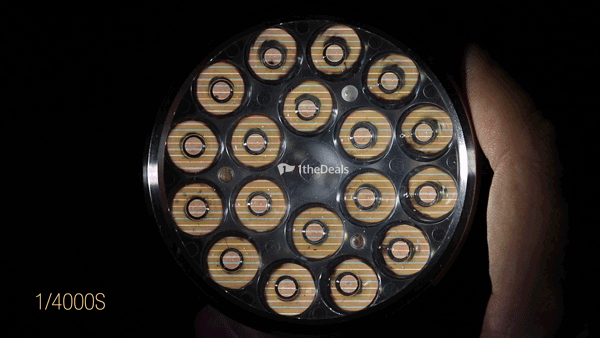No regulated mode? ![]()
And I was thinking of buying another one as backup too.
No regulated mode? ![]()
And I was thinking of buying another one as backup too.
I’m just reporting what he said.
I think there IS a regulated mode. I just need to see the driver. I’ll try and find Toykeeper’s info. (Lexel mentioned a resistor bank, so that should be what regulates the non-FET channel. He didn’t say the max current, though.)
Edit: It seems like Toykeeper tested the early prototype using TA’s driver. We know that the production version switched over to a different driver made by Lexel, so all of that old information may not be accurate anymore.
If anyone runs across driver photos, please post them.
All modes of MF01S have flickering visible by cell phone camera except turbo. Regulated mode have no flickering on other lights.
That’s not true. Plenty of Lights have a flicker when viewed through a cell phone camera. It’s also kind of irrelevant, unless you’re using a camera to film a flashlight.
I believe any flicker is due to the frequency of the PWM used by the MCU. If it’s sufficiently high, like 14k, it’s not going to be seen at all.
Are you saying you don’t like what you’re seeing or are you just making a note of it?
I like this light. You are right. Camera can catch PWM just from very close distance not usable in real life. I just noticed that regulated mode don’t flickering even for camera probably due to higher PWM than other modes on same light.
PWM (or lack of) and regulated modes are not always related. For what i understand, FET+1 drivers with ramping firmware like Anduril do use PWM on the regulated channel to modulate intensity.
All channels use PWM (FET+1 or FET+X+1 drivers with ramping firmware like Anduril or NarsilM). Say channel 1 uses 8 7135 chips and channel 2 is a FET. Both channels use PWM to control the brightness. Max power on channel 1 means the pulse width is 100% so it’s like a direct short and the effects of the pulse width dissappear. Then max on channel 2 also means 100% pulse width which is like a direct short. 100% “On”, regardless of the frequency, looks like a solid connection. Channel 1 is just to limit the output to a smaller range, then channel 1 stays at 100% pulse width and channel 2, the FET, starts at it’s lowest pulse width and climbs. As the width of the pulse goes up, the brightness goes up. All the while, the frequency of the pulses stay the same.
Note, some people say PWM to mean “visable” PWM. People like Tom E, Texas_Ace and ToyKeeper set the frequency fairly high, usually 14k to maybe 18k, so as to avoid the visable PWM. Cheaper drivers might use a lower frequency, because their cheaper components may not be capable of higher frequencies. I think under 10k or so hertz some people can notice. Some people won’t notice unless it gets even lower. It varies from person to person.
I can actually hear a high pitch noise at max ramp and near max ramp. Don’t really notice it if it’s more than 30 cm from my ear though.
My DSLR camera is able to capture PWM @1/4000s.

Emisar D18 does exhibit similar behavior too.

Has anyone looked fit head mf01s to mf01? I think a long tube is suitable for mf01s? if anyone has mf01 and mf01s tell me please.
Doesn't work with long tube. No full contact for the cathode ends. edited: https://budgetlightforum.com/t/-/55962/1059
understood thanks
Ordered a blue 4000K one, received it via customs today… ![]()
Seems nice so far… ![]()
Any chance for long tubes for this light? That would make it very very usable for long hikes.
Agreed, id be interested.
Can you send me the code for the diffuser?
I could not keep up with the news all the time, how Lexel’s driver is different to the former TA driver?
BTW, I just got mine delivered today, it is freaking good - it smacks the ROT66 by being much brighter than the numbers difference would suggest - I own both 4000K SST-20 of these.
Regarding tint, it is certainly FD2 tint, as it is slightly warmer than the FB4 ROT-66 and also rosier.
Long tube works on mine.

Crazy two headed beast.
